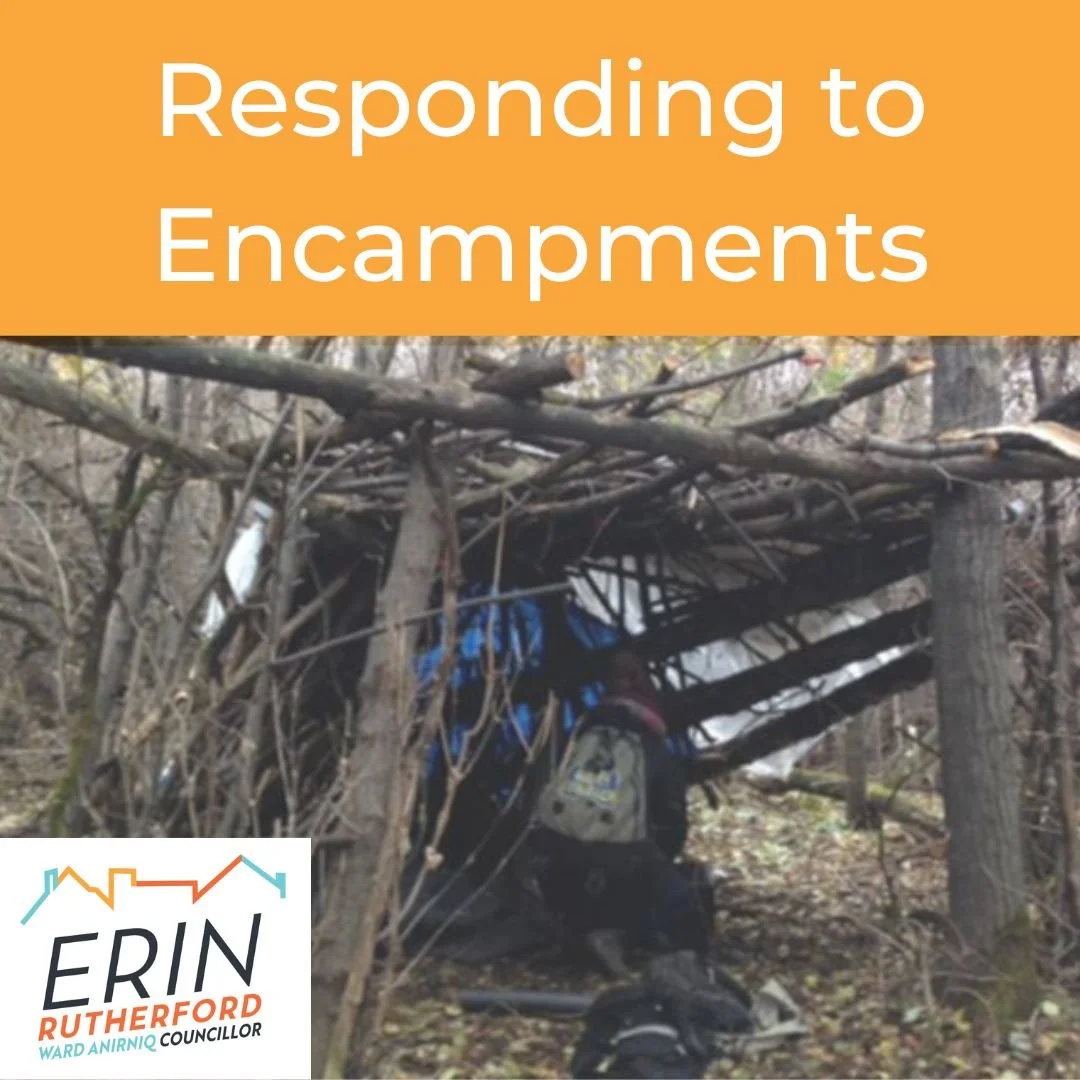Responding to Encampments
I’m going to be honest. This is a hard blog to write. I’m struggling with the words to discuss the reality we are facing as a city. Encampments are symptoms of bigger issues related to housing, access to health services, and income inequality. The harsh reality is that homelessness in Edmonton has increased. The most recent numbers from Homeward Trust highlight that 2,888 Edmontonians are currently experiencing homelessness and 754 are listed as unsheltered (not in a shelter or provisionally housed).
As a City, we continue to take actions within our capabilities to address homelessness. This includes providing funding for supportive housing and HomeED, and contemplation of extending funding for day shelters. What’s also true is that we can’t do it alone and Edmonton is not unique in facing a housing crisis. This is an issue we see in cities across Canada.
Encampment related calls to the City have increased over 1000% - which is a huge capacity strain. Addressing encampments requires a balance between safety and recognizing that persons facing homelessness are dealing with significant hardship and trauma. Shuffling unhoused individuals from one location to another is not the solution - in fact, that’s one of the reasons that calls have increased. A recent report to Council highlighted the negative outcomes of this approach. The City continues to balance risks to public safety and connect folks to supports to address the underlying issues of homelessness.
So what currently happens if you call 311 to report an encampment? The encampment team assesses the risk including size of the encampment, biohazards, needles, garbage, fire, amount of materials present, propane tanks, and proximity to schools or playgrounds. For Low risk encampments, the team works with the people staying in the encampment to determine a timeline for clean up and connect individuals with agency partners. High risk encampments are closed or cleaned up within 1-3 days of the team investigation of the site. People staying in the encampment are also offered resources on available transportation and shelter support.
There is no easy solution to address the issues surrounding encampments. The challenges we face will continue until the number of people experiencing homelessness significantly reduces. This is done by improving interventions and social policies that address various pathways to homelessness. I’m grateful for the valuable work that the City does in partnership with the organizations we work alongside to support our fellow residents who are at their most vulnerable.
